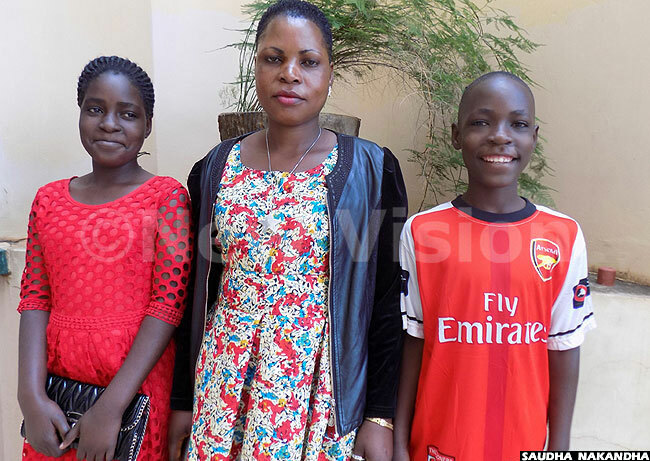What causes repeated twinning?
One health expert pegs repeated twinning to high fertility.
PIC: Jenifer Victoria Namaganda with her second set of twins Getrude Babirye (left) and Amos Kato. (Credit: Agnes Kyotalengerire)
KAMPALA TWINS FESTIVAL
On August 20, Sunday Vision will hold a festival for twins dubbed Kampala Twins Festival at Kyadondo Rugby in Kampala. Ahead of that much anticipated day, we will publish stories on twins.
Jenifer Victoria Namaganda has had two sets of fraternal twins. Her first set, Wasswa Joshua Amos and Joyce Hilda Nakato, are eight years old. Her second set, Babirye Gertrude and Amos Kato, are two years younger.
According to the Ganda culture, Namaganda remains a naloongo (a mother of twins), even with another set of twins.
But in this day and age, a new term has since emerged: nabaloongo. That is used unofficially by some people to refer to women who give birth to more than one set of twins.
Namaganda says although two sets of twins seems to be a handful, she does not regret giving birth to twins because she always longed to have them.
Her case - of giving birth to twins more than once - is rare.
Health experts offer explainations to what causes women to give birth to twins more than once.
Dr. Evelyn Nabunya, a consultant gynecology/obstetric in the department of maternal and fetal care unit at Mulago Hospital, pegs the issue of repeated twinning to high fertility.

Joyce Nakato (left) and Joshua Wasswa with their mother Namaganda at the New Vision Offices
Naturally, a woman should produce one egg every month, but some women have a tendency to produce more than one egg during the ovulation cycle which increases their chance of having repeated multiple pregnancies that are fraternal twins, she weighs in.
Nabunya adds that fraternal twins are the result of hyper ovulation. This means the woman released two eggs (or more) during ovulation instead of the typical one.
There is also another way of looking at it.
Dr. Romano Byaruhanga, a senior consultant gynecologist/obstetrician at Kampala Medical Chambers, says having multiple pregnancies is genetical, which means that the tendency to have multiple pregnancies runs in the family.
"A woman who has a sibling who is a fraternal twin is more than twice likely to get pregnant with fraternal twins," he says.
Additionally, Dr. Gonzaga Andabati, a consultant gynecologist/obstetrician at Bethany Women's Hospital in Luzira, explains that genetic predisposition is key in repeated twinning.
"If you have a genetic composition and you get a set of twins, that means you have a chance of getting another set. However, the chances of repeated twinning depends on how strong the genetic risk factor is."

Gertrude and Amos are fraternal twins
Andabati stresses that identical twins come about by accident, where the one fertilized egg divides into two or more. This happens accidentally and it is unlikely to happen again.
Aside, fertility treatment increases the chances of getting twins, he says, adding that there are drugs specifically taken to increase the number of eggs a woman releases in a particular month.
He however regrets that lately this is being abused because some women without fertility issues take them just to have more than one baby.
On his part, Byaruhanga says the other artificial reproductive techniques that can result into multiple pregnancy is the intra-vitro fertilization, where doctors transfer more than one embryo into the woman's womb.
Meanwhile, Andabati thinks that also maternal age has a role to play in repeated twinning as fertility varies with age.
"When a woman has just started her ovulation, fertility is lower because they produce fewer eggs or even do not produce any in some months," he says. This improves with time as the woman reaches maximum fertility between 25 to 35 years.
"It is during this time that the chances of releasing more than one egg increases," affirms Andabati.
ALSO RELATED TO THIS STORY
They have had two sets of twins
Kato and Wasswa plan to marry on same day